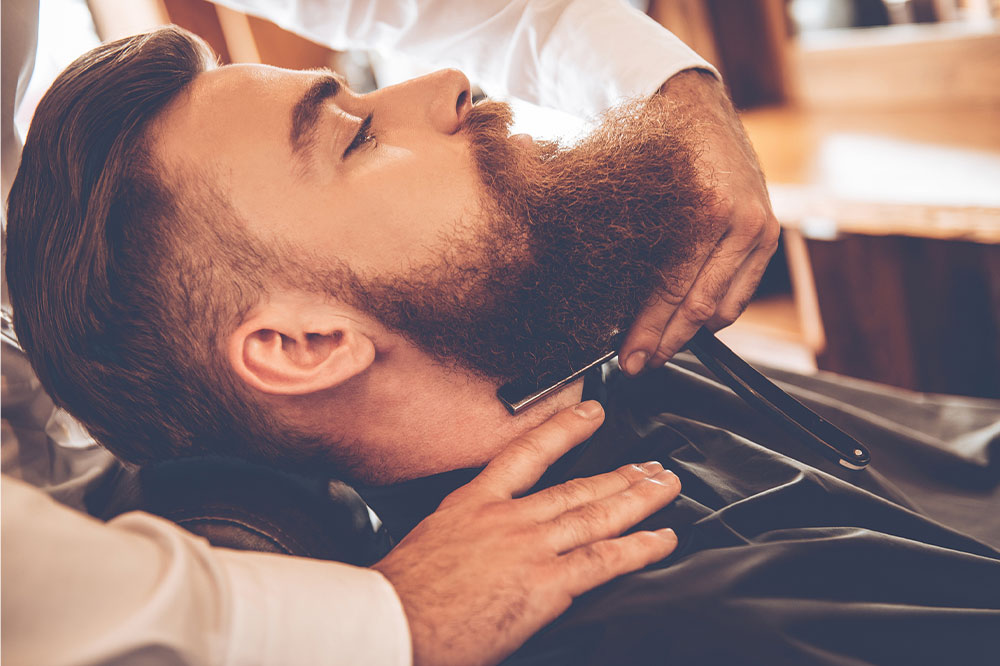8 beard grooming mistakes to avoid

A remark one may hear often is that their beard makes them look like a different person altogether. Beards do offer a unique look, extending or defining certain features of the face. Well-groomed facial hair can be styled in various ways to help one stand out and look their best. However, maintaining a beard is not limited to just letting hair grow. One should adopt good grooming habits to keep the beard clean and strong.
Not using enough beard oil and moisturizer
Using beard oil is one of the best ways to give facial hair an adequate amount of shine. Additionally, a good beard oil helps keep the skin around the beard moisturized while giving a shinier, healthier, and fuller look to facial hair. Oil also makes a beard incredibly easy to maintain and removes the unwanted itchiness one may commonly experience with facial hair. A beard moisturizer is also useful to keep the beard and skin hydrated and healthy. However, one needs to refrain from using too much beard oil or moisturizer, as these products can cling to the skin and lead to buildup. The product buildup can clog pores and attract dust. One should also check the ingredient list to avoid buying products with skin irritants or allergens.
Ignoring the neckline
A beard neckline is often called the bottom border of facial hair. A well-trimmed neckline gives the beard a neat, fuller look. So, neckline grooming is a crucial part of beard grooming, making facial hair appear longer or thicker and well-maintained. Many may make the mistake of trimming their neckline up to their jaw, which can make the beard look like a chin strap. So, one should consider trimming close to Adam’s apple to make the beard look fuller. An excessively high neckline makes the beard look shorter and gives it an unnatural appearance.
Washing the beard daily
Washing the beard, in itself, is a healthy practice that should be taken up a couple of times a week. However, one should avoid washing the beard every day. Using soap or shampoo on facial hair every day can strip the skin of its natural oils and sebum layers. As a result, those who thoroughly wash facial hair on a daily basis are likely to experience dryness around the skin that holds the beard. Further, using too many soaps and shampoos, especially those with harsh chemicals, can cause itching and dryness as well. One should opt for beard shampoos and avoid using regular hair products on facial hair. Further, avoiding products with irritants and strong chemicals is crucial for preventing dry skin.
Not brushing the beard regularly
Beards, especially thicker ones, tend to trap plenty of particles like pollen grains and dust. This is why brushing the beard gently from time to time using is a healthy beard grooming habit. Brushing not just cleans facial hair, it also gets rid of tangles and makes the beard look well-maintained. Beards need to be cleaned regularly, but not necessarily with water and shampoo.
Combing before brushing
One of the most common beard grooming mistakes is combing the beard before brushing it. Brushing the beard as soon as one wakes up can loosen the tangles in the hair, making it easier to then break the knots using a comb. However, when one uses a comb before brushing their beard, then the hair might have too many tangles. So, running the comb through them can be incredibly painful and might cause breakage.
Trimming at the wrong time
There are downsides to trimming the beard too much or too little or taking up the task too early or too late. If one trims or shaves their beard too soon or too often, it might take them longer to get the shape and length they want. At times, excessive trimming can make hair look thin and uneven. It is also important to avoid shaving in a rush as it can cause cuts and wounds on the skin, cheeks, and neck. On the other hand, if one trims their beard rarely, then the facial hair can grow out of control and take on an unkempt appearance.
Falling for beard myths
It is important to look up and avoid falling for myths regarding beards. For instance, shaving helps the beard to grow back faster. This is incorrect, as the only aspect that decides how quickly the beard would grow back is genetics. Another common myth is that the beard makes one feel hotter in summer. This is also incorrect because beard hairs hold sweat droplets closer to the face. This cools the skin as the sweat beads evaporate. The third myth is that beards trap food. However, proper hygiene practices, like brushing and cleaning the beard, can get rid of unwanted particles and keep hair clean, like any other part of the body. So, one should avoid falling for such misconceptions when it comes to growing and grooming beards.
Not drinking enough water
Hydration is essential for the skin and hair. Further, drinking lots of water helps keep the skin soft and moisturized. So, staying hydrated is crucial for avoiding itching and dryness around the beard. Also, drinking enough water and other fluids help the skin retain its elasticity, making it look more youthful. Further, water helps hair get essential nutrients and keeps it strong, making it a key step for getting a healthy, luscious-looking beard.
In addition to the abovementioned errors, one should avoid using hot styling tools too often to straighten beard hair, as such appliances can damage hair strands and make them dry and brittle. It is also important to avoid other beard grooming mistakes, like leaving the beard untended or giving up on maintaining facial hair, as this can give the face an unkempt look.







